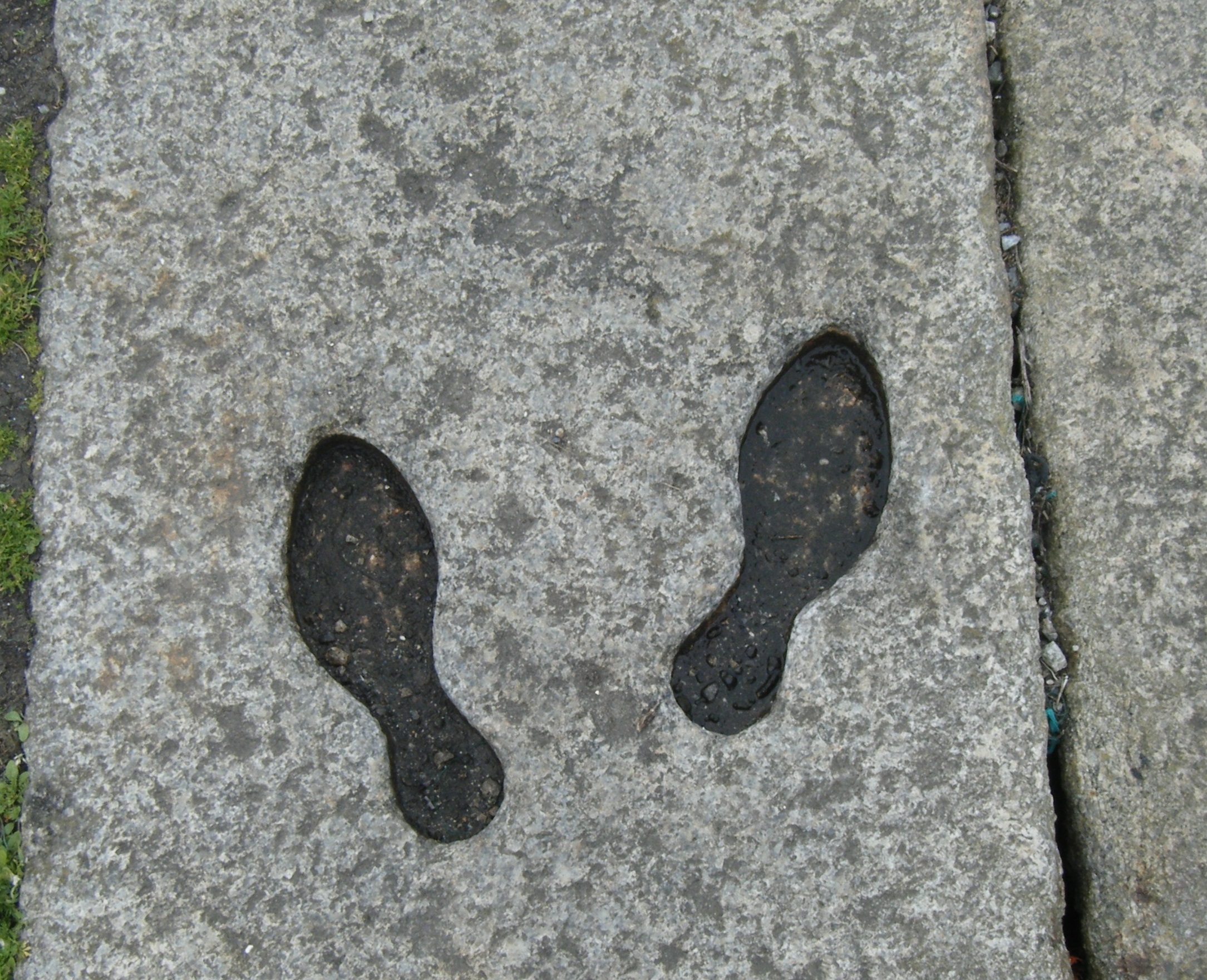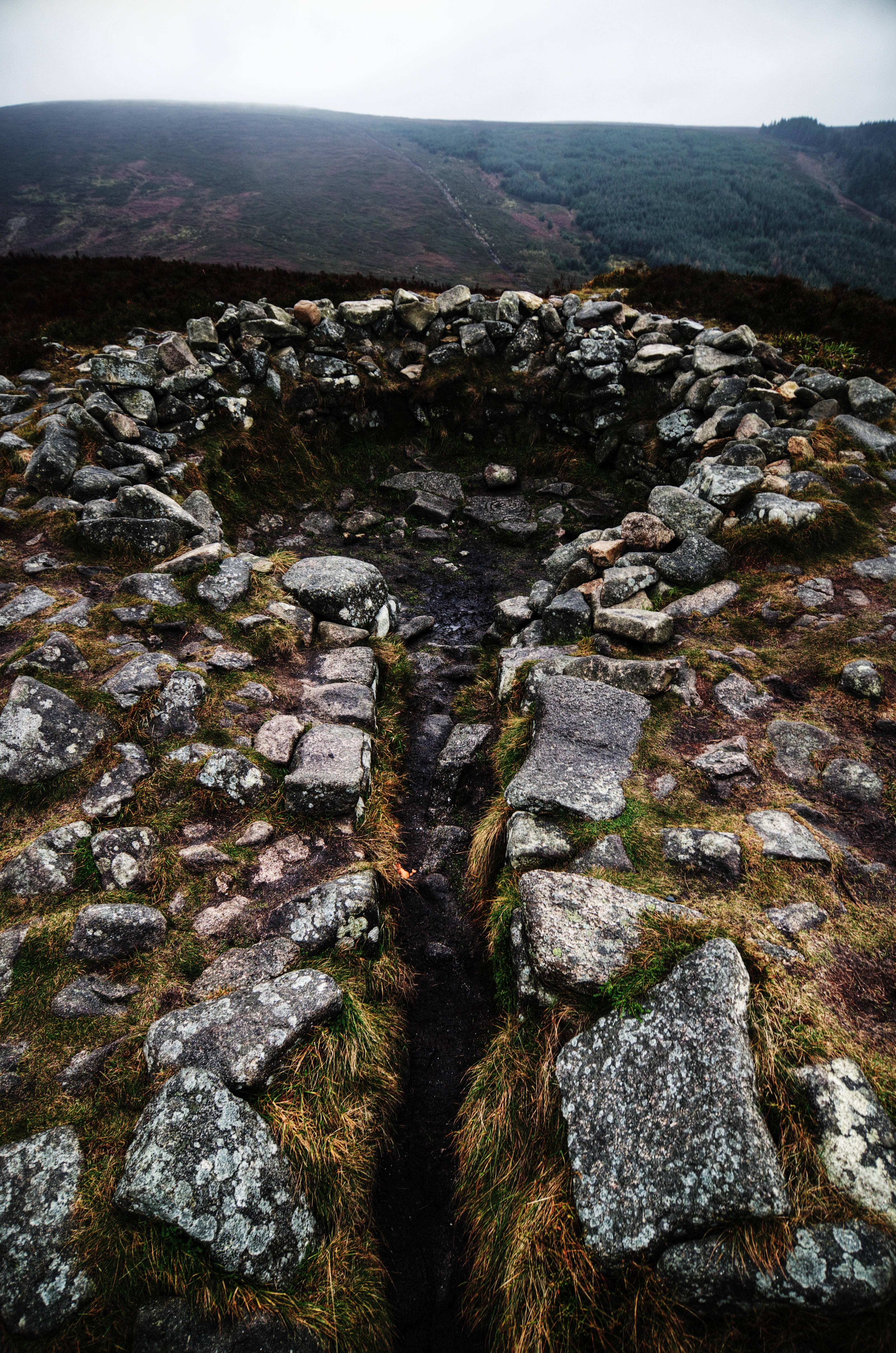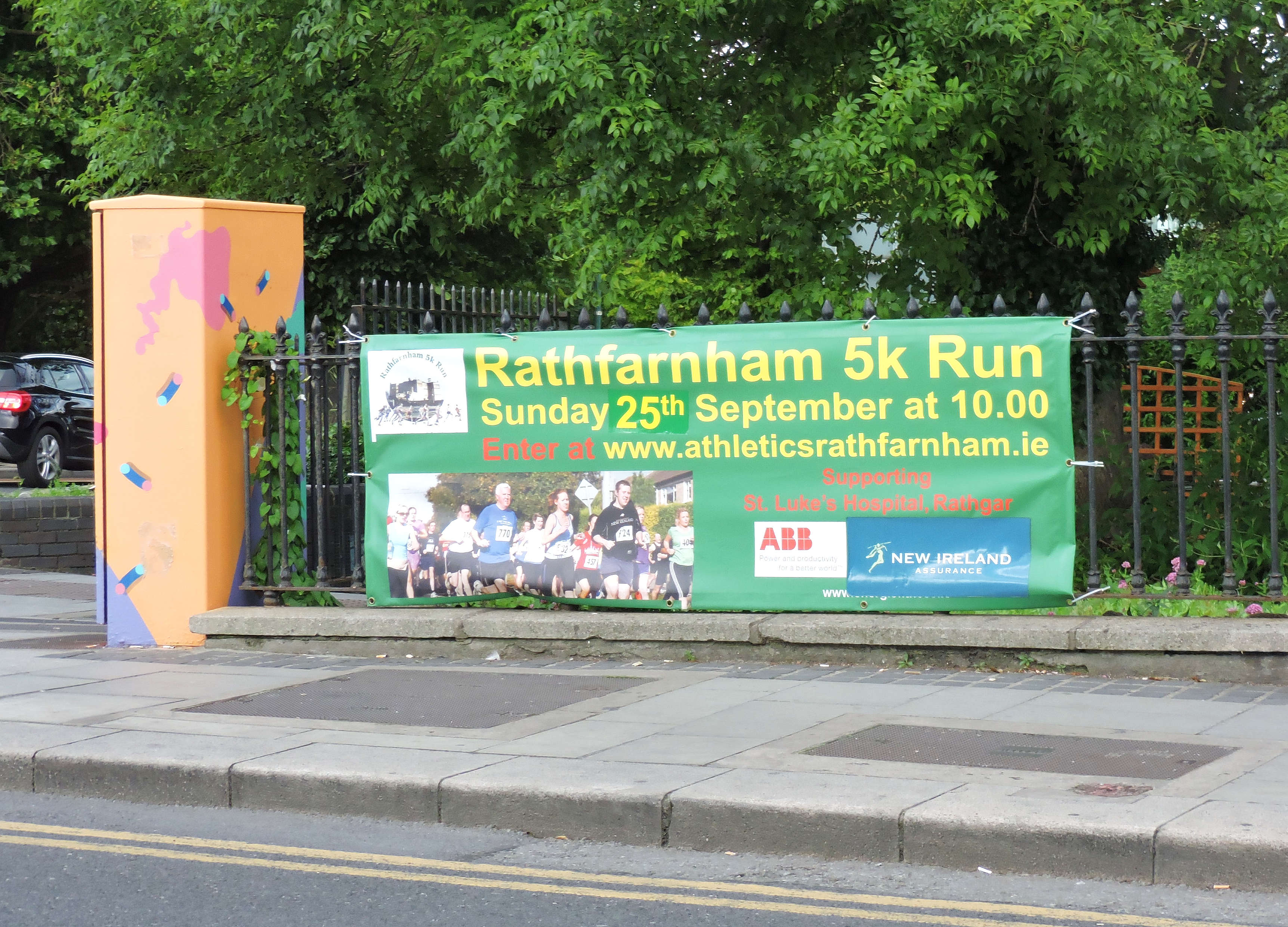|
Taney, Dublin
The Parish of Taney () is a populous parish in the Church of Ireland, located in the Dundrum area of Dublin. Taney is also a civil parish of the same name, in the barony of Dublin and the Rathdown (County Dublin barony), barony of Rathdown. History Early history Taney's origins go back to the early Irish saint Nathi, who in the 6th century established a centre for monastic life. This centre may have been on what is now the site of St. Nahi's Church in Dundrum. The derivation of the parish name, ''Taney'', suggests that it derives from the Irish ''Teach Nahi'' or ''Nahi's house''. Another possible source is ''Tamhnach'', meaning a ''green field'' or ''arable spot''. While there are no details available, there seems little doubt that religious worship was taking place here for some considerable time before the Anglo-Norman Invasion of 1169–1171, which made use of a papal bull asserting Rome's rights to all islands off the coast of Europe. The Rural See (seat of a Rural Bi ... [...More Info...] [...Related Items...] OR: [Wikipedia] [Google] [Baidu] |
Taney Church, Dundrum, Ireland
Taney may refer to: * Taney (Vouvry, Switzerland), a hamlet * Taney Parish, a Church of Ireland community in south Dublin, Ireland * Taney County, Missouri, United States * , a United States Coast Guard cutter * , a United States Liberty Ship * Roger B. Taney Roger Brooke Taney ( ; March 17, 1777 – October 12, 1864) was an American lawyer and politician who served as the fifth Chief Justice of the United States, chief justice of the United States, holding that office from 1836 until his death in 186 ... (1777–1864), U.S. Attorney General and Chief Justice * Mary Florence Taney (1856–1936), American clubwoman * Lac de Taney, Switzerland * Taney Seamounts, a range of underwater volcanoes See * Toney, surname {{disambig, geo, surname ... [...More Info...] [...Related Items...] OR: [Wikipedia] [Google] [Baidu] |
Archdeacon
An archdeacon is a senior clergy position in the Church of the East, Chaldean Catholic Church, Syriac Orthodox Church, Anglican Communion, St Thomas Christians, Eastern Orthodox Church, Eastern Orthodox churches and some other Christian denominations, above that of most clergy and below a bishop. In the High Middle Ages it was the most senior diocesan position below a bishop in the Catholic Church. An archdeacon is often responsible for administration within an archdeaconry, which is the principal subdivision of the diocese. The ''Oxford Dictionary of the Christian Church'' has defined an archdeacon as "A cleric having a defined administrative authority delegated to him by the bishop in the whole or part of the diocese.". The office has often been described metaphorically as ''oculus episcopi'', the "bishop's eye". Catholic Church In the Latin Catholic Church, the post of archdeacon, originally an ordained deacon (rather than a priest), was once one of great importance as a sen ... [...More Info...] [...Related Items...] OR: [Wikipedia] [Google] [Baidu] |
Howth
Howth ( ; ; ) is a peninsular village and outer suburb of Dublin, Republic of Ireland, Ireland. The district as a whole occupies the greater part of the peninsula of Howth Head, which forms the northern boundary of Dublin Bay, and includes the island of Ireland's Eye, which holds multiple natural protection designations. Howth has been settled since prehistoric times, and features in Irish mythology. A fishing village and small trading port from at least the 14th century, Howth has grown to become a busy and affluent suburb of Dublin, with a mix of suburban residential development, wild hillside and heathland, golf courses, cliff and coastal paths, a small quarry and a busy commercial fishing port. The only neighbouring district on land is Sutton, Dublin, Sutton. Howth is also home to one of the oldest occupied buildings in Ireland, Howth Castle, and its estate. Howth is also a Civil parishes in Ireland, civil parish in the ancient Barony (Ireland), barony of Coolock (barony), ... [...More Info...] [...Related Items...] OR: [Wikipedia] [Google] [Baidu] |
Whitechurch, County Dublin
Whitechurch () is a small suburban area on the south side of County Dublin, in the local government area of South Dublin, situated south of Ballyboden, east of Edmondstown and west of Marlay Park. The greater part of the area lies north of the M50 semi-orbital motorway, with some remote parts merging into the mountainous districts of Tibradden and Kilmashogue south of the road, all at the foot of the Dublin mountains. Whitechurch is usually considered to lie within the greater Rathfarnham area. Whitechurch is in a townland and civil parish of the same name. The name of the area is derived its name from a small white church in Kilmashogue, built near an ancient cairn (which is a protected monument). Little remains of the church. The Church of Ireland parish of Whitechurch includes most of Rathfarnham including Tibradden, Larch Hill and Kilmashogue. There is a Moravian cemetery in the area which was the burial ground for the Moravian community, a Protestant sect from what is ... [...More Info...] [...Related Items...] OR: [Wikipedia] [Google] [Baidu] |
Cruagh
Cruagh ( Irish: ''An Chraobhach'') is a civil parish in the barony of Uppercross in South Dublin, Ireland. It contains the townlands of Cruagh, Killakee, Tibradden, Glendoo, Newtown, Jamestown, Woodtown and Orlagh. It is situated south of Ballyboden on the R116 regional road. Toponymy The name of the parish derives from , meaning 'branches'. This ultimately comes from Old Irish , or . The name in its current form was first recorded in 1641. The area was commonly known as 'Creevagh' or 'Crevagh' until the 19th and, on occasion, the early 20th century. Early history The area has been inhabited since the Neolithic period, evident by the chambered cairn situated atop nearby Tibradden Mountain. It is likely that this settlement in the area continued through the Bronze Age, due to the 2nd century BC cemetery uncovered during the 1950s in Edmondstown. Around 460 AD a small church was built in what is now the old section of Cruagh Cemetery. It was likely built by Dalua, a 5th-cen ... [...More Info...] [...Related Items...] OR: [Wikipedia] [Google] [Baidu] |
Rathfarnham
Rathfarnham () is a Southside (Dublin), southside suburb of Dublin, Republic of Ireland, Ireland in County Dublin. It is south of Terenure, east of Templeogue, and is in the postal districts of Dublin 14 and Dublin 16, 16. It is between the Local government in the Republic of Ireland, local government areas of Dún Laoghaire–Rathdown and South Dublin. Located within the barony (Ireland), historical baronies of Rathdown (County Dublin barony), Rathdown and Uppercross, Rathfarnham village originally developed around a fortification overlooking a ford on the River Dodder. From the medieval period, Rathfarnham was on the perimeter of the Pale (the area of Normans in Ireland, Anglo-Norman influence in Ireland, centred on Dublin), and a number of defensive structures were built in the area. Rathfarnham Castle, a fortified house, was built in the late 16th century. Developed around these structures, by the 19th century there were a number of mills operating in the area, and Rathfarn ... [...More Info...] [...Related Items...] OR: [Wikipedia] [Google] [Baidu] |
Donnybrook, Dublin
Donnybrook () is a district of Dublin, Republic of Ireland, Ireland, on the southside (Dublin), southside of the city, in the Dublin 4 postal district. It is home to the Irish public service broadcaster Raidió Teilifís Éireann (RTÉ) and was once part of the Pembroke, Dublin, Pembroke Township. Its neighbouring suburbs are Ballsbridge, Sandymount, Ranelagh and Clonskeagh. Donnybrook is also a Civil parishes in Ireland, civil parish mainly situated in the old Barony (Ireland), barony of Dublin (barony), Dublin. History Donnybrook Fair dates from a charter of King John of England in 1204 and was held annually until 1855. It began as a fair for livestock and agricultural produce but later declined, growing into more of a carnival and funfair. Drunkenness, fighting, and hasty marriages became commonplace and the people of Donnybrook were anxious that it should cease. Eventually, the fair's reputation for tumult was its undoing. From the 1790s on, there were campaigns against t ... [...More Info...] [...Related Items...] OR: [Wikipedia] [Google] [Baidu] |
Robert Pont
Robert Pont (the abbreviated form of Kylpont or Kynpont) (1529–1606) was a Church of Scotland minister, judge and reformer. He was a church minister, commissioner and a Senator of the College of Justice. His translation of the Helvetian Confession was ordered to be printed by the General Assembly. Pont's legal skill allowed him to be made Provost of Trinity College, and through the influence of Morton, but with the consent of the Assembly, he accepted a seat in the Court of Session in 1572. Working for the church he assisted in the preparation of the Second Book of Discipline. He protested so prominently against the Black Acts that he was compelled for a time to take refuge in England. On returning with Angus and other Protestant Lords, he resumed his ministerial duty at St. Cuthbert's. Among other writings, he prepared for the Assembly three sermons against sacrilege and also published a revised edition of the Psalms, and a Latin treatise on the "Union of the two Kingd ... [...More Info...] [...Related Items...] OR: [Wikipedia] [Google] [Baidu] |
Booterstown
Booterstown () is a coastal suburb of the city of Dublin in Republic of Ireland, Ireland. It is also a townland and Civil parishes in Ireland, civil parish in the modern county of Dún Laoghaire–Rathdown. It is situated about south of Dublin city centre. History There is some debate on the origin of the town name Booterstown. Historically known in English as "Ballyboother" the name "Booterstown" is an anglicised form of the original Irish name ''Baile an Bhóthair'', meaning "The Town of the Road". In its original Irish form it shares the same name as Batterstown in County Meath, as well as Ballinvoher in Kilkenny, Cork, Kerry, Limerick, Longford and Mayo. Booterstown lies along an ancient route once known as Slíghe Chualann, which connected the residence of the High King of Ireland at Tara with his outlying lands in Cualann. Cualann is the ancient name for the area of land stretching towards Bray (). However, there are also several references to the names "Butterstonne" ... [...More Info...] [...Related Items...] OR: [Wikipedia] [Google] [Baidu] |
Elizabeth I
Elizabeth I (7 September 153324 March 1603) was List of English monarchs, Queen of England and List of Irish monarchs, Ireland from 17 November 1558 until her death in 1603. She was the last and longest reigning monarch of the House of Tudor. Her eventful reign, and its effect on history and culture, gave name to the Elizabethan era. Elizabeth was the only surviving child of Henry VIII and his second wife, Anne Boleyn. When Elizabeth was two years old, her parents' marriage was annulled, her mother was executed, and Elizabeth was declared royal bastard, illegitimate. Henry Third Succession Act 1543, restored her to the line of succession when she was 10. After Henry's death in 1547, Elizabeth's younger half-brother Edward VI ruled until his own death in 1553, bequeathing the crown to a Protestant cousin, Lady Jane Grey, and ignoring the claims of his two half-sisters, Mary I of England, Mary and Elizabeth, despite statutes to the contrary. Edward's will was quickly set aside ... [...More Info...] [...Related Items...] OR: [Wikipedia] [Google] [Baidu] |
Henry VIII Of England
Henry VIII (28 June 149128 January 1547) was King of England from 22 April 1509 until his death in 1547. Henry is known for his Wives of Henry VIII, six marriages and his efforts to have his first marriage (to Catherine of Aragon) annulled. His disagreement with Pope Clement VII about such an annulment led Henry to initiate the English Reformation, separating the Church of England from papal authority. He appointed himself Supreme Head of the Church of England and dissolution of the monasteries, dissolved convents and monasteries, for which he was List of people excommunicated by the Catholic Church, excommunicated by the pope. Born in Greenwich, Henry brought radical changes to the Constitution of England, expanding royal power and ushering in the theory of the divine right of kings in opposition to papal supremacy. He frequently used charges of treason and heresy to quell dissent, and those accused were often executed without a formal trial using bills of attainder. He achi ... [...More Info...] [...Related Items...] OR: [Wikipedia] [Google] [Baidu] |







